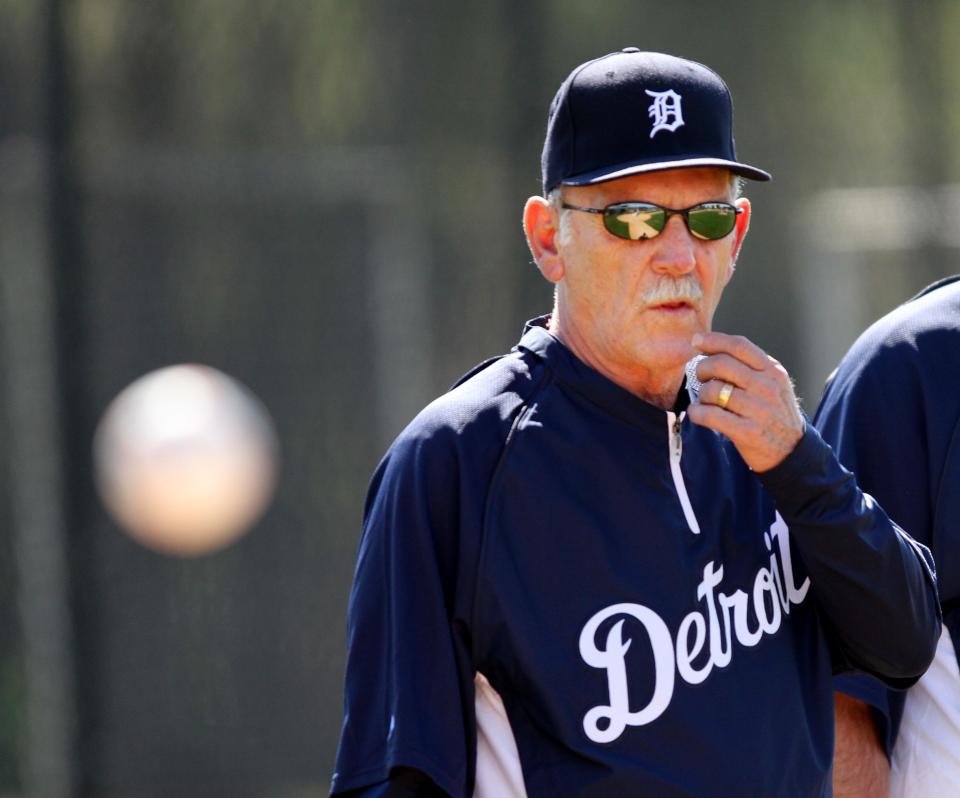'Everybody's trying to throw harder': Jim Leyland says velocity might be hurting arms

Hall of Fame manager Jim Leyland was in Florida this week on a scouting mission for Scott Harris, Detroit's president of baseball operations. He was taking a break in Sarasota prior to his next stop, which was up the road in Tampa.
"I'm going to see the Lakeland Tigers in Tampa," Leyland said as he relaxed before the trip.
Leyland has a special connection to the Lakeland club. He managed Lakeland for three years, 1976-78, and won Florida State League championships in '76 and '77, finishing second in '78. That kick started his managerial career.
As he has risen through the ranks, Leyland has established himself as one of the most astute minds in the game. And he has some interesting observations on one of baseball's major issues, the sudden rash of arm injuries affecting pitchers.
Pitchers have been having arm problems for years, but not like this, not like now. The Athletic's Ken Rosenthal recently highlighted the issue, documenting its impact on a team's ability to compete as one after another, starting pitchers blow out their arms and fall to the side.
Detroit has not been immune. In recent years, Tiger mainstays like Tarik Skubal, Matt Manning and Casey Mize have all been sidelined with assorted arm problems, which have kept them out of the rotation for varying lengths of time. In Mize's case, all of 2022 and '23.
Rosenthal listed three major reasons for this, an emphasis on throwing with high velocity, the pitch clock, which leads to arm fatigue, and year-round training.
"I don't have the answers, I don't think anybody does," Leyland said. "And I'm not here to criticize. The game has changed and you have to keep up or get left behind. Technology and analytics play a big part in how things are done now.
"There's an emphasis on velocity and teams have a lot of information on how to protect their pitchers.
"But when you're throwing hard on every pitch with maximum spin rate, giving maximum velocity, there are probably several issues involved," Leyland said. "Everybody's looking for velocity, so everybody's trying to throw harder because they feel that's the only way they can get to the big leagues."
It wasn't always that way. From 1987, when he first became a regular member of Atlanta's starting rotation, to 2008, his last year as a starter, Greg Maddux won 355 games, eighth best all time. He pitched in 744 games and threw 5008.1 innings, 13th best ever. And he threw off-speed pitches, almost never using a fastball. Velocity was important back then, but it wasn't emphasized the way it is now.
"I'd rather have somebody who throws 93, 94 with control than a guy who throws 98 with no control," Leyland said. "Everybody's in love with the radar gun. I get it. But you need pitchability. If you're going to throw 100 mph every time, your mechanics better be perfect to get away with it, and nobody's perfect.
"Another thing," Leyland said. "Guys don't throw a lot of innings in the minor leagues. They go four-five-six innings. We're overly cautious. Pitchers don't throw as much as they used to. They're saving their arms for the big leagues.

"But if you're only throwing five innings in the minors, you're going to get a five-inning pitcher in the show. Then when they get stretched out, throwing as hard as they can every pitch, you're going to hurt your arm. And pitchers don't take time off anymore," Leyland said. "They're throwing year round as hard as they can." And that is taking its toll.
In baseball, as in all sports, this is the age of analytics and technology. You can diagnose and dissect anything. Technology is the most important tool in the tool box in determining how things are done, and Leyland understands that. But you can take things too far. In the end, you have to be aware of the human factor because it's part of the equation.
Technology is a wonderful thing, but sometimes, it's not the solution. It's the problem.
This article originally appeared on The Ledger: Jim Leyland says obsession with velocity might be hurting MLB arms

